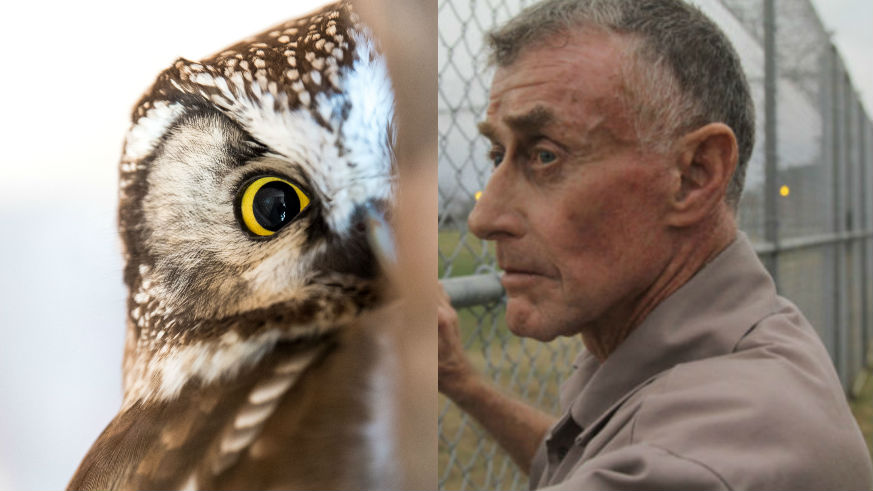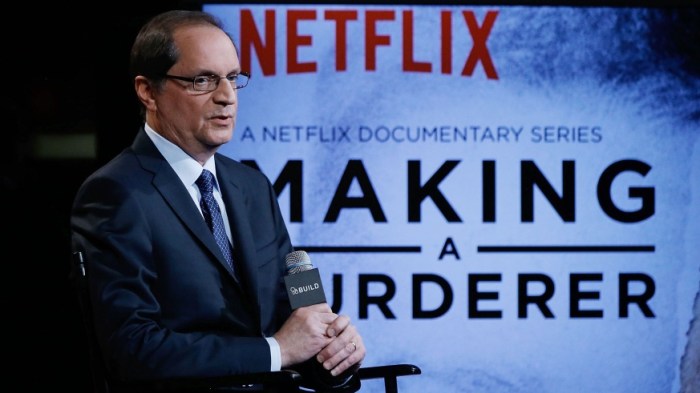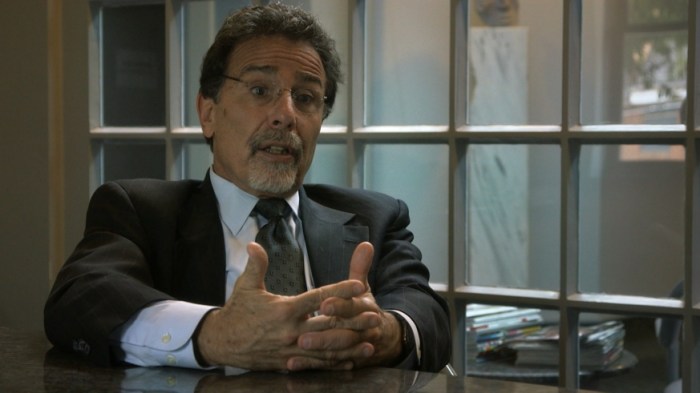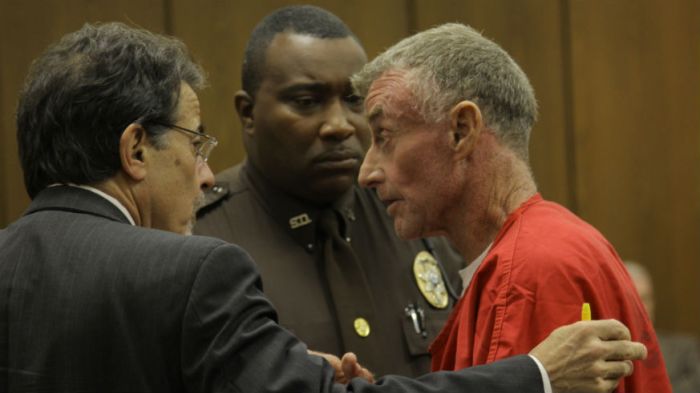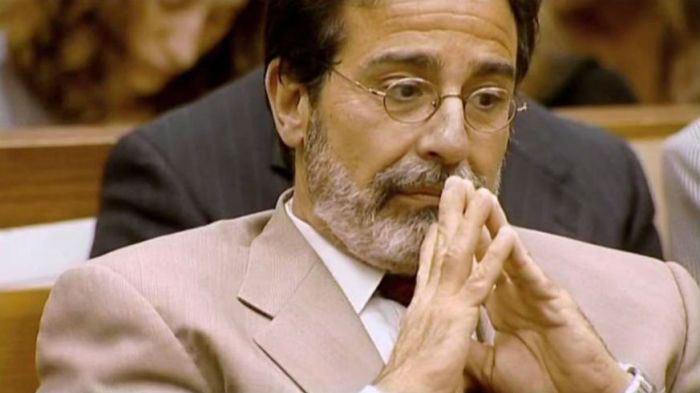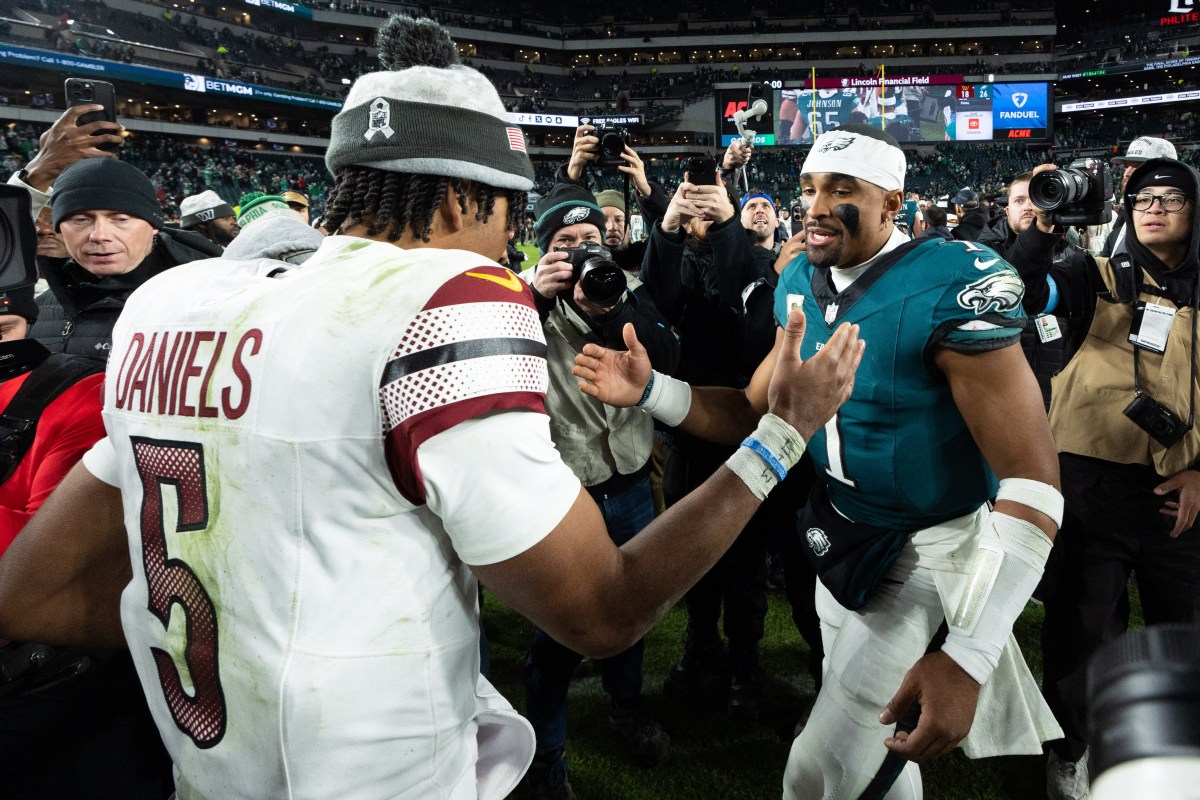So you binge-watched your way through The Staircase already, and you’re still not sure whether you think Michael Peterson is guilty or not. (For those of you who have only heard his name repeated around the office, you check out our guide to who is Michael Peterson to catch up on why he’s the talk of the web right now.) We asked the director whether he thinks Peterson is guilty, but if you only know the case from the Netflix true crime series, you don’t have all the information because they left out the owl theory.
The Staircase owl theory gap is a bit troubling, considering that some say it could prove Michael Peterson’s innocence. The case is undoubtedly confusing, you’ve probably noticed if you watched even one episode of the series. The physical evidence, it’s been pointed out, doesn’t clearly add up to a murder or a fall down the stairs. But does this bizarre theory explain it all? Decide for yourself whether it’s implausible or actually could clear Peterson’s name by reading up on it below.
Wait, what is the owl theory?
The owl theory wasn’t presented in the initial trial for Michael Peterson, but rather formulated later by the Petersons’ neighbor Larry Pollard. In 2008 he suggested that perhaps an owl had flown into the house and attacked Kathleen, causing her injuries and eventual death from blood loss. His inspiration appears to be a series of YouTube videos showing owls, which are not uncommon in the area of North Carolina where Pollard and the Petersons live, attacking humans — specifically on the head.
Pollard suggested two ways Kathleen’s death could have been caused by an owl: Either, he claimed, she could have spooked the owl when she came upstairs, causing it to attack her and leading to her falling down the stairs; or she could have been attacked outside, out of hearing range of Michael who was sitting by their pool, and fell as she rushed inside after vicious attack and hit her head on the first few steps of the staircase.
Why The Staircase owl theory gap is troubling
The Staircase owl theory gap becomes glaring in light of a 2009 reexamination of the evidence, which seemed to back up the theory, no matter how bizarre. Kathleen was found with feathers consistent with those of an owl and cedar needles on her hands and body. “We know that we got the feather,” Pollard told The Durham News in 2010. “We know that it happened late at night. We know that there was a small wooden slither recovered that was determined to be a tree limb. The SBI crime lab did not examine the feathers. They assumed these feathers didn’t have anything to do with the crime.”
That’s not to say that the feathers are the hard evidence they might seem. As ornithologist Dr. Carla Dove pointed out, the feathers collected were inconclusive. Although she was only able to look at pictures rather than examine the actual feathers, she said they couldn’t even tell her what order of bird they were from.

Even though Dr. Deborah Radisch, who performed the autopsy on Kathleen Peterson, said it was unlikely an owl or any other bird could have caused her wounds, three other experts disagreed. The experts who supported the owl theory filed three separate affidavits in 2010. One of which, submitted by Dr. Alan van Norman said: “The multiple wounds present suggest to me that an owl and Ms. Peterson somehow became entangled. Perhaps the owl got tangled in her hair or perhaps she grabbed the owl’s foot.” Pollard said that the affidavits gave him “new hope.”
The same article featured a quote from Dr. Patrick T. Redig, a professor of veterinary medicine at the University of Minnesota, who finds the owl theory plausible. Dr. Redig said the possible attack outlined in the theory is “entirely within the behavioral repertoire of large owls.”
Despite the feathers and the expert advocates, no motion for a retrial was filed for Michael Peterson in 2009 on the basis of the owl theory.
Does The Staircase director believe the owl theory?
“The first time I heard about the Owl Theory I said to myself, ‘That’s totally stupid!'” Jean-Xavier de Lestrade, the director of The Staircase, said. “But later, Larry Pollard explained to me in a very effective way what he thought could have happened.”
But does de Lestrade saying it “could have happened” mean he subscribes to the owl theory personally? “I don’t know what happened the night Kathleen Peterson died, but I have hard time believing that’s a murder,” the director explained to Wired. “It is very difficult to explain Kathleen Peterson’s injuries if it is a murder. That’s why, today, I believe the Owl Theory may be the best theory to explain what happened to Kathleen.”

So if de Lestrade believes the owl theory personally, why didn’t it show up during the 10 hours of content in The Staircase on Netflix? “I decided to keep it out of the film because it was never presented in court,” he told Wired. “I wanted to stick to Michael Peterson’s judicial journey. I just wanted to present how the legal system will treat the case.”
The Staircase owl theory bonus feature
Netflix did release a bonus feature that has Peterson’s attorney David Rudolf explaining the idea, as well as claiming that he believed there was enough evidence to investigate the validity of owl theory further. You can watch it below:

